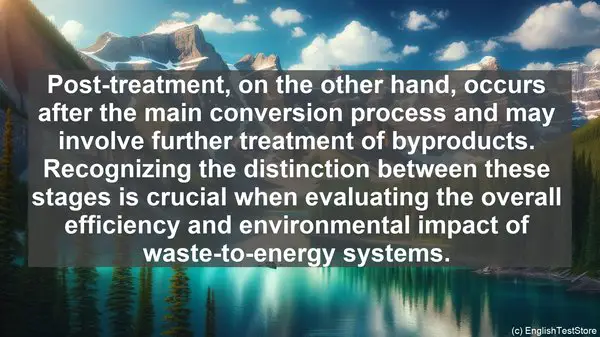Introduction: The Importance of Correct Terminology
Welcome to our lesson on the top 10 commonly confused words in waste-to-energy technology. As you dive deeper into this field, you’ll realize that using the correct terminology is essential for effective communication and comprehension. Let’s begin!
1. Combustion vs. Gasification
While both combustion and gasification are waste-to-energy processes, they differ in their approach. Combustion involves the direct burning of waste, while gasification converts waste into a gas. Understanding this distinction is crucial when discussing the efficiency and environmental impact of different waste-to-energy methods.
2. Biogas vs. Syngas
Biogas and syngas are often used interchangeably, but they have distinct compositions. Biogas is primarily methane and carbon dioxide, produced through the breakdown of organic matter. On the other hand, syngas is a mixture of carbon monoxide and hydrogen, typically derived from gasification. Knowing the difference is vital when analyzing the energy potential and applications of these gases.

3. Landfill vs. Incinerator
Landfills and incinerators are two common waste management methods. Landfills involve burying waste, while incinerators burn it. Each has its advantages and challenges, such as the potential for leachate in landfills or emissions in incinerators. Understanding these distinctions is crucial for evaluating the environmental impact of waste disposal.
4. Anaerobic Digestion vs. Fermentation
Anaerobic digestion and fermentation are biological processes used in waste treatment. Anaerobic digestion breaks down organic matter in the absence of oxygen, producing biogas. Fermentation, on the other hand, involves the conversion of organic compounds, such as sugars, into alcohol or acids. Recognizing the variance between these processes is essential when considering waste treatment options.
5. Pyrolysis vs. Gasification
Pyrolysis and gasification are thermal processes used in waste conversion. Pyrolysis occurs in the absence of oxygen, leading to the production of solid char, liquid bio-oil, and gas. Gasification, as mentioned earlier, involves the conversion of waste into a gas. Distinguishing between these methods is crucial when assessing the outputs and potential applications of waste-to-energy technologies.
6. Residue vs. Ash
In waste-to-energy processes, residue and ash are often generated. Residue refers to the solid material left after waste treatment, which may still contain recoverable materials. Ash, on the other hand, is the inorganic material that remains after combustion or gasification. Recognizing the difference is vital when considering the disposal or potential reuse of these byproducts.
7. Cogeneration vs. Combined Heat and Power
Cogeneration and combined heat and power (CHP) are similar concepts, involving the simultaneous production of electricity and useful heat. Cogeneration is a broader term, encompassing any simultaneous production of two forms of energy. CHP, however, specifically refers to the generation of electricity and heat. Understanding these terms is crucial when discussing the energy efficiency of waste-to-energy systems.
8. Incineration vs. Co-incineration
Incineration and co-incineration both involve the combustion of waste. However, incineration typically refers to the dedicated burning of waste in a specialized facility. Co-incineration, on the other hand, involves the combustion of waste alongside other fuels, such as coal or biomass, in an existing industrial plant. Recognizing this distinction is important when considering the integration of waste-to-energy with other industries.
9. LFG vs. SRF
LFG and SRF are terms often encountered in waste-to-energy discussions. LFG stands for landfill gas, which is produced by the decomposition of organic waste in landfills. SRF, on the other hand, refers to solid recovered fuel, which is a processed form of non-recyclable waste used as a fuel source. Differentiating between these terms is vital when analyzing the potential energy recovery from waste streams.

10. Pre-treatment vs. Post-treatment
In waste-to-energy processes, pre-treatment and post-treatment are common stages. Pre-treatment involves the processing of waste before its conversion, such as sorting or shredding. Post-treatment, on the other hand, occurs after the main conversion process and may involve further treatment of byproducts. Recognizing the distinction between these stages is crucial when evaluating the overall efficiency and environmental impact of waste-to-energy systems.
